Chances are, you have heard of Sailor Moon. Her unique dango hairstyle and ultra leggy sailor outfit are hard to forget. Sailor Moon, also known as Usagi or Serena (depending on what language you read/watch), is the main character of said shoujo manga and anime. She likes boys and sweets, hates homework, is often clumsy, and occasionally extremely selfish. Oh, and she fights evil with her friends using magical makeup and accessories. Cute, right?
But have you ever thought of Sailor Moon as a form of empowerment for girls? Even though it's a cartoon, Sailor Moon is all about kicking butt, friendship, and using your femininity as a source of power. You may not see it yet, but trust me. Sailor Moon is oozing with girl power!
Naoko Takeuchi: The Woman Behind It All
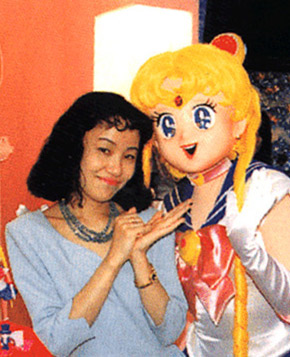
Naoko Takeuchi, the beloved creator of Sailor Moon affectionately dubbed "goddess" by her fans, was already a popular up-and-coming shoujo writer when she began work on Sailor Moon. Unlike her previous shoujo mangas, Naoko wanted to deviate from strictly romantic stories toward self-contained fights between good and evil, as seen in super sentai shows. Naoko's intention wasn't to make a "feminist" manga. She simply wanted to tell a story that readers, especially females, could relate to, all while tying in friendship, action, romance, and fantasy into one glorious package.
Naoko herself said she was inspired to create Sailor Moon based on her experiences in junior high. When she first pitched the idea (then titled, Codename is Sailor V) to her editor, he said he wanted her to put the hero in a sailor outfit. She ultimately turned this idea into a powerful symbol for the girls reading her comics. As you may already know, sailor uniforms are familiar in Japan as the typical girls' school uniform, and Naoko liked the concept of such a recognizable symbol for young girls.
Despite the cute and innocent image of the sailor style uniforms, Japanese middle school girls have quite a rough time. Academics become increasingly important, which leads to added stress and (surprise, surprise!) bullying. In an interview from 1992, Naoko confides that she drew inspiration from this time in her life because she believes it is one of the most difficult times for girls. Rather than make an ideal hero, Usagi/Serena was created to be an average girl that was sometimes lazy and boy-crazy. Contrasting her normal student life and her alter ego, Naoko made a character that readers could relate to, while including the fantastic elements they craved.
Usagi/Serena represents an everyday Japanese girl and isn't a perfect role model. Watching her mature is one of the strong points of the series. Ultimately, we watch her grow from a clumsy 14-year-old girl into a capable young woman with a solid group of friends. By series' end, Usagi is a loving wife, caring mother, and supportive friend.
Sailor Moon was groundbreaking for its time, thanks to Naoko's unwillingness to back down and tailor the story to her editor's liking. She mentions in a 2013 interview with ROLa Magazine that many older male workers at Nakayoshi Magazine tried to dictate her characters' appearances and attributes. In her own words, she exclaimed that she wouldn't let "old men" decide how a story for young girls should be written. (Really, what would they know about shoujo?) It was obvious, she added, that they did not respect female authors in the first place. One of the biggest disputes arose when the male editors did not understand why Naoko wanted to make all the girls beautiful. Instead they wanted the characters to fit into typical manga stereotypes (an obese character, a nerdy character, etc.), because that is how fighting squadron series are usually formulated. Instead, Naoko followed her gut and infused each heroine with femininity and grace for her revitalization of the magical girl genre.
Magical Girls…So What?
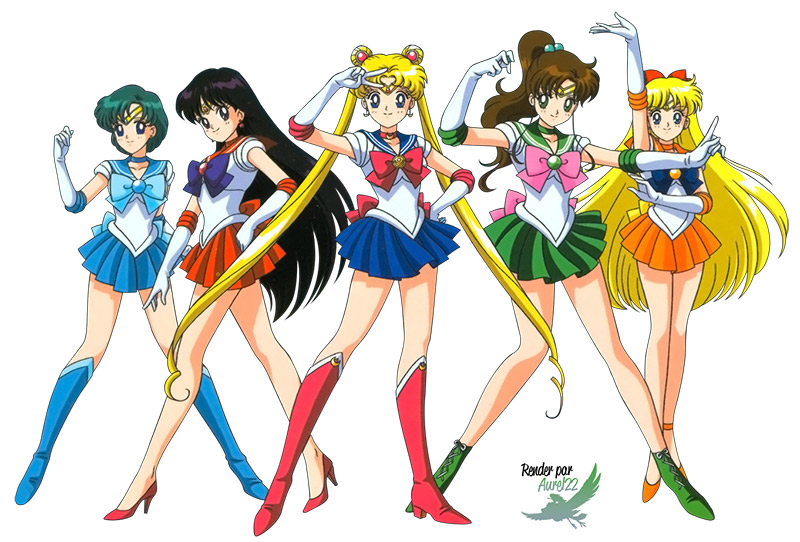
The fact that Sailor Moon is still extremely popular, both in Japan and internationally, is a big deal. What's even more exciting is that it is getting a revival, 20 years after its initial release! How many series can brag about that? Beyond that, how many shoujo manga can you think of that don't mainly focus on romance? This shortens the list considerably.
What's more, the acceptable mainstream manga adored by both male and female fans tends not to be shoujo manga— they are almost always shounen. This is why it is such a big deal when a shoujo manga does makes such a splash. It shows girls that there is no reason why things considered "girly" shouldn't be popular, and their representation matters.
Transforming Gender Identity

Perhaps one of the most recognizable bits of animation in Sailor Moon is the girls' transformation into sailor scouts. I'll admit, it's a bit risqué for a kids' show. They are basically are naked (which is not shown of course— they become sparkly outlines with huge anime eyes) and magically wrapped in ribbon that transforms into their boots, uniform, and gloves. The fact that the girls get their power from magical makeup doesn't exactly seem empowering, either. But, before you judge, hear me out.
Japanese society is still deeply segregated by gender. Even female politicians experience the pressure of expected gender roles placed upon them. Even with their powerful occupations, they feel the need to subvert that power by adopting preconceived gender identities, such as housewife. What I'm saying is that even though these women are important figures, even they try to downplay their power so they seem less threatening. It's sad, but true.
In contrast, you have Sailor Moon and her friends using makeup to gain magic powers, and, damn, are they going to look cute while kicking some ass! Sailor Moon and the rest of the Sailor Scouts use their gender identities as a source of power instead of using femininity to seem less threatening.
The Power of Friendship!

Sailor Moon's friendship with the other Sailor Scouts is one of the most important aspects of the show. Though the plot in the series is generally very consistent, the heroes' backstories and friendships are explored in depth throughout the manga and animated series. In a 1996 interview with Animerica Magazine, Naoko states that she saved all of her love for the girls and rarely expanded her male characters (with the exception of Tuxedo Mask). She wanted to show that their friendship matters the most and is the core of their group dynamic. Using friendships, she demonstrates that girls are strong and powerful and can be independent and happy, whether they have boyfriends or not. Usagi and Rei's friendship in particular is very interesting as it starts off with the most turbulence. Often squabbling over petty issues, they eventually become quite close and loyal to each other. Even Naoko explained that they squabble like this because they are so close and comfortable with each other, perhaps insinuating that she, too, has a friendship like this.
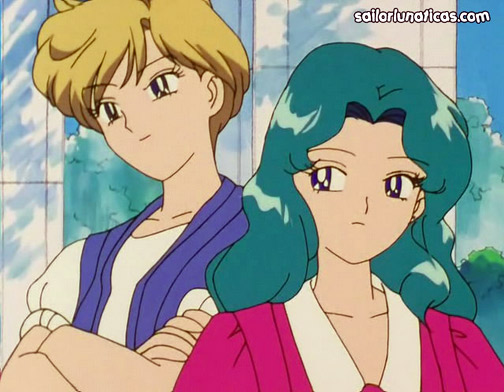
One of the most notable relationships is between Sailor Neptune and Sailor Uranus. Much to Sailor Moon's initial confusion, Sailor Uranus is a girl despite her androgynous appearance. Haruka, or Sailor Uranus, is described as having the powers of both sexes. She is physically strong, which is taken as a male attribute by Usagi. At one point in the manga, Haruka challenges Makoto, Sailor Jupiter, to a friendly judo match and overpowers her. Usagi and her friends believe that Haruka should have gone easy on Makoto because she is girl, not realizing that Haruka is also female. Naoko highlights that, even though males are biologically stronger than females, it doesn't mean that all females are physically weaker than their male counterparts. Haruka does traditionally male activities and she is the best at what she does, beating all the boys at their own game.
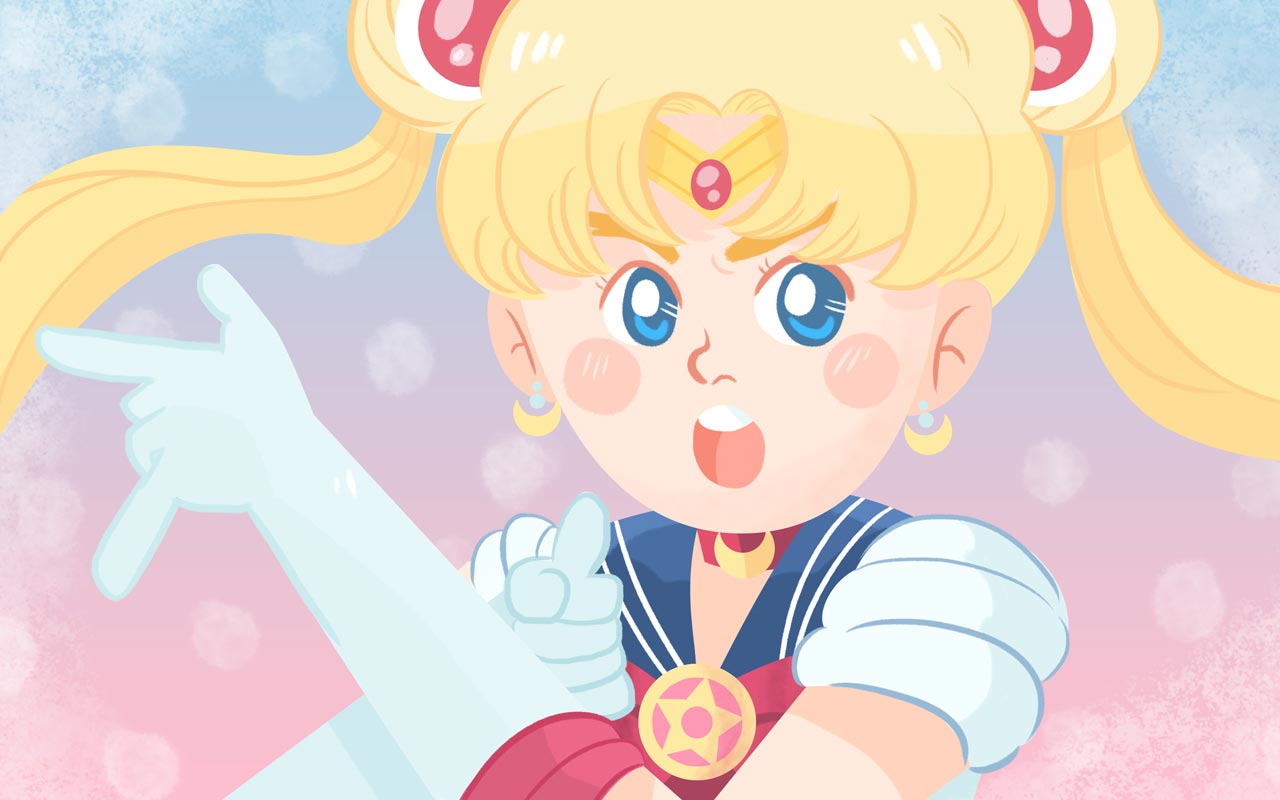
The relationship between Haruka and Michiru (Sailor Neptune) is also widely discussed. Naoko is often asked about their relationship and confirms that they are indeed romantic partners. Naoko's decision to include Haruka and Michiru's homosexual romance was a surprisingly progressive move for a manga intended for young girls. In general, homosexuality still isn't widely discussed, supported, nor recognized in Japan. Yet, even back in 1996, Naoko decided to include Haruka and Michiru's romance. What is even better is that their sexual orientation doesn't dominate their whole personality— it is merely a facet of their characters. In an interview with Kappa Magazine in 1996, Naoko explains that Michiru and Haruka's relationship was meant to show that strong friendships can be and are essential for love and that heterosexual love is not the only type of love.
Love is in the Air
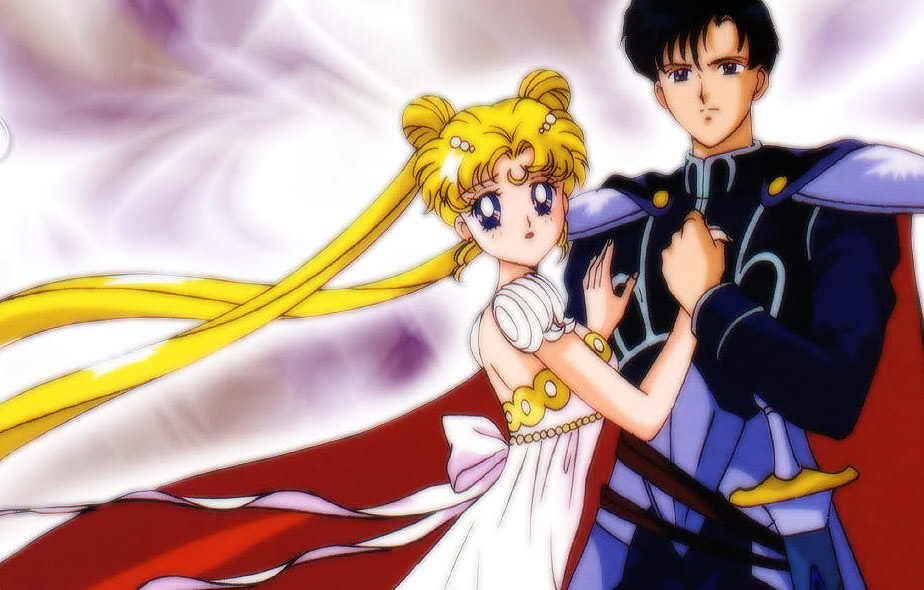
Naoko has stated that she is a shoujo manga artist, so romance is an important aspect of her series. The main romance in the series is between Usagi (Sailor Moon) and Chiba Mamoru (literally means World Protector— best name ever, right?). They start off as playful teenagers, constantly teasing each other. Mamoru, who doesn't know he is the reincarnation of King Endymion (or Tuxedo Mask), is kidnapped and brainwashed more often than any other character in Sailor Moon. For once, it is up to the girls to save the guy. Yet, Mamoru isn't a bumbling idiot. As Tuxedo Mask, he often helps the girls, while looking really cool and mysterious with his endless supply of roses. Throughout the series, as his relationship with Usagi grows, Mamoru protects and respects her, showing a healthy, happy relationship. Though Naoko conveys that the girls are independent and "don't need boys", that doesn't mean they can't choose to be in a relationship. In the series, we see Mamoru and Usagi become parents of their daughter Chibi-Usa. Usagi becomes a homemaker, despite being a powerful protector of the Earth, and that is perfectly fine.
Fighting Evil By Moonlight

Next time you see Sailor Moon, think of all the girl power that is behind that cute sailor uniform and magic makeup. I'm not saying that it is the perfect example of feminism. That was not Naoko Takeuchi's intention— the girls fight evil in mini skirts, for Pete's sake! On top of that, there's hardly any diversity among the girls' appearances, and they occasionally even voice fat-phobic statements. So no, Sailor Moon is not flawless. But it does happen to hit a lot of the right notes. It teaches girls to be proud of who they are, find power in their femininity, and make choices that build healthy relationships. All that coupled with action and romance makes Sailor Moon an amazing series that offers a lot to its target audience. And that's more than can be said for most media aimed at young girls.
